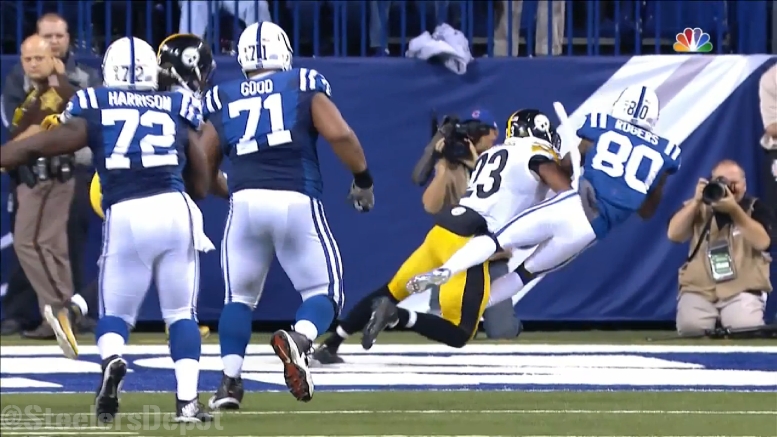While the Pittsburgh Steelers defense was able to hold a depleted Colts home offense to just seven yards, anybody who watched the game knows that the game could have been much closer. That is partly thanks to the Colts, and partly thanks to the Steelers’ defense—in both the good and bad sense.
The Colts had two opportunities during the game to score a touchdown with goal-to-go situations. Twice during the game, they had a third and goal situation from the one or the two and did not score. Twice, they chose to pass up the easy field goal and went for it on fourth and goal from the one. And twice, the Steelers defense made a play to stop the Colts’ offense.
Those two plays were the difference between what at the time was a 21-7 game and what could have been a 21-21 game. The Colts also missed a field goal from 50-plus. At the very least, had that field goal been made, and the other two not been passed up, the game at one point could have been at a margin of 21-16, a five-point game.
The defense deserves fault for allowing the Colts to execute some long drives. On the first fourth-down failure, they began the drive at their own 37 and traveled 62 yards before finally being stopped. On their second opportunity from the one, the drive began all the way back from their own 10-yard line, traveling 89 yards.
Coincidentally, on both occasions, it was a Steelers safety who came up to make a stop on a scramble by Colts quarterback Scott Tolzien. On third and one on the first drive, he ran a bootleg and looked to score, but rookie Sean Davis stepped up and laid a hit on him that halted his progress at the one.
On the second possession, it was veteran Mike Mitchell who came up to whack Tolzien at the one to stop his progress before he was able to score. The backup quarterback took a number of hits throughout the day, and the two hits on these scrambles were about as forceful as any of them.
The defense fed off of those successes, as well. Following the second goal-line stop, the secondary intercepted Tolzien twice on consecutive drives, and the offense capitalized in between with a touchdown drive to seal the game. The offensive starters were pulled following the second reception with a 21-point lead and four minutes left to play.
While Tolzien played as well as one could expect—and he was done no favors by a couple of drops and other tough passes that could have been caught—he was not quite accurate enough on the two goal-line throws on fourth down, and that played a big part in establishing the difference in this game. A score on either play could have dramatically shifted the complexion of the game.







